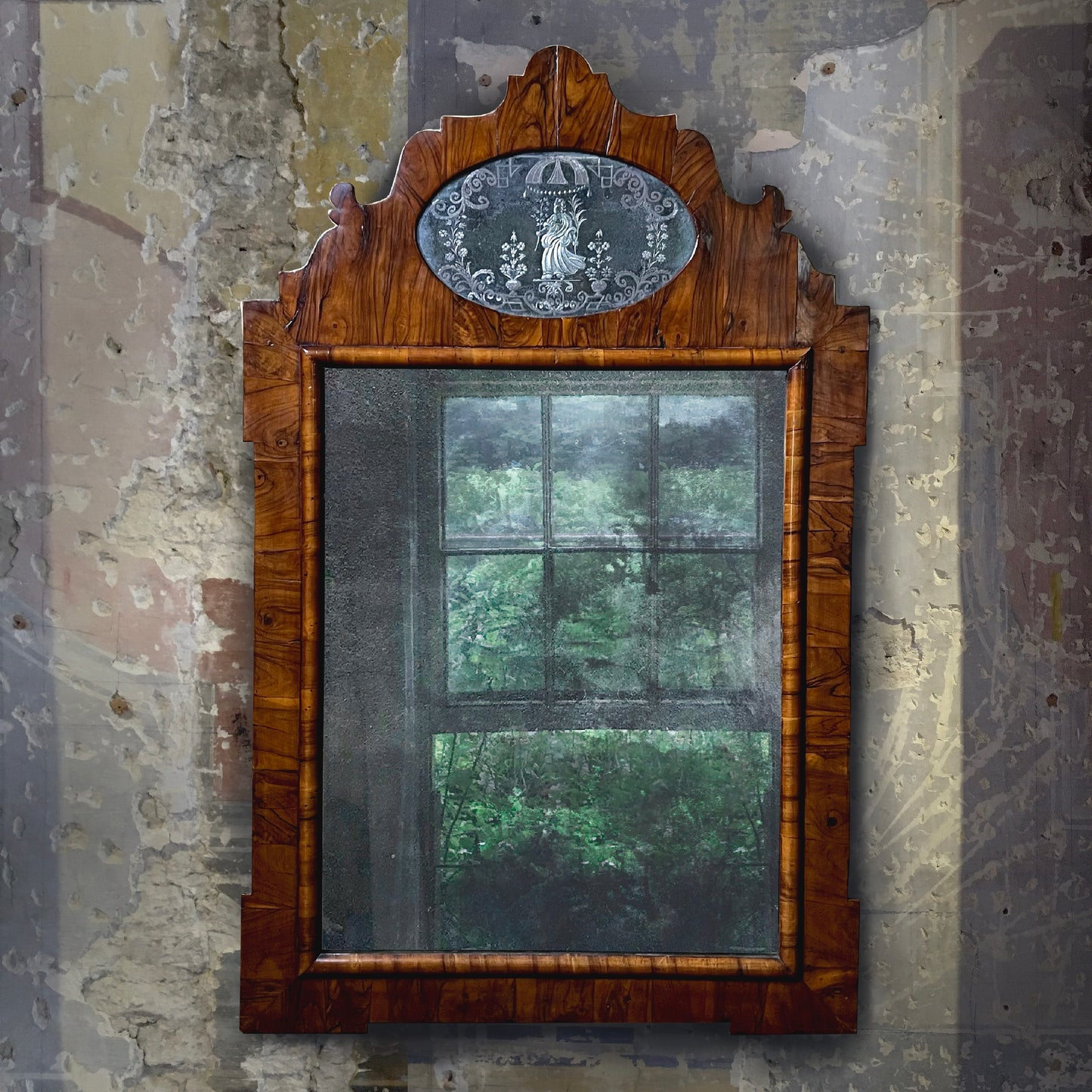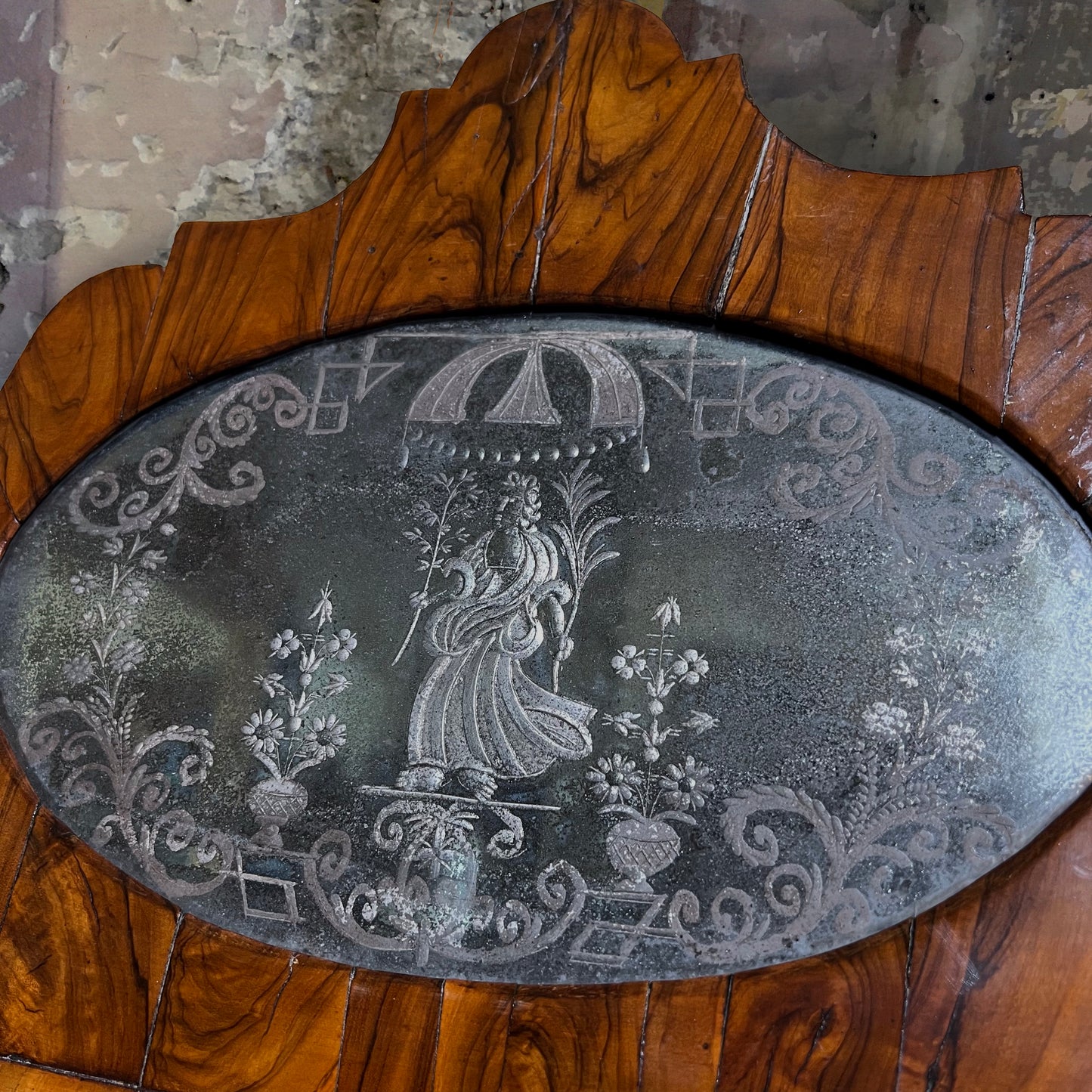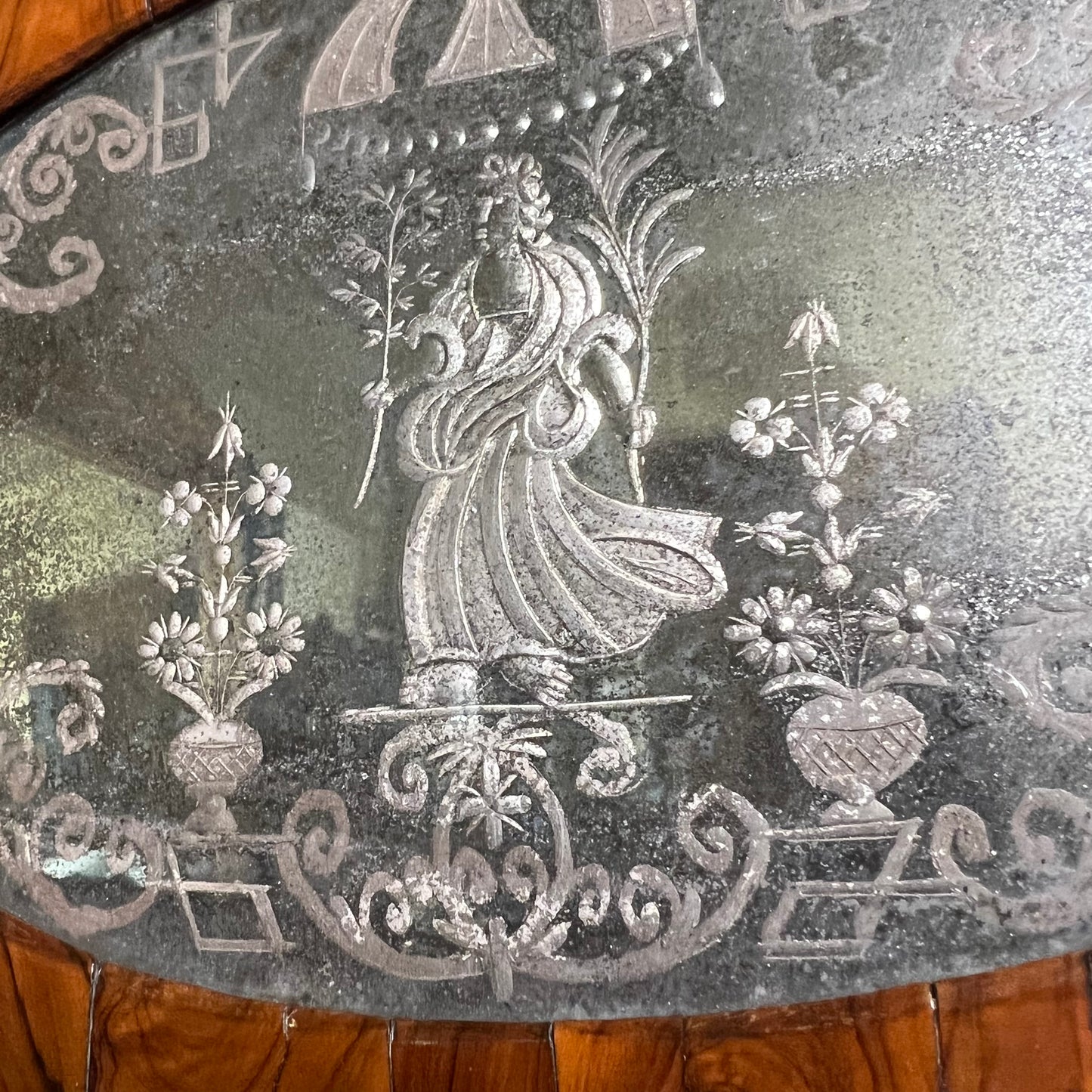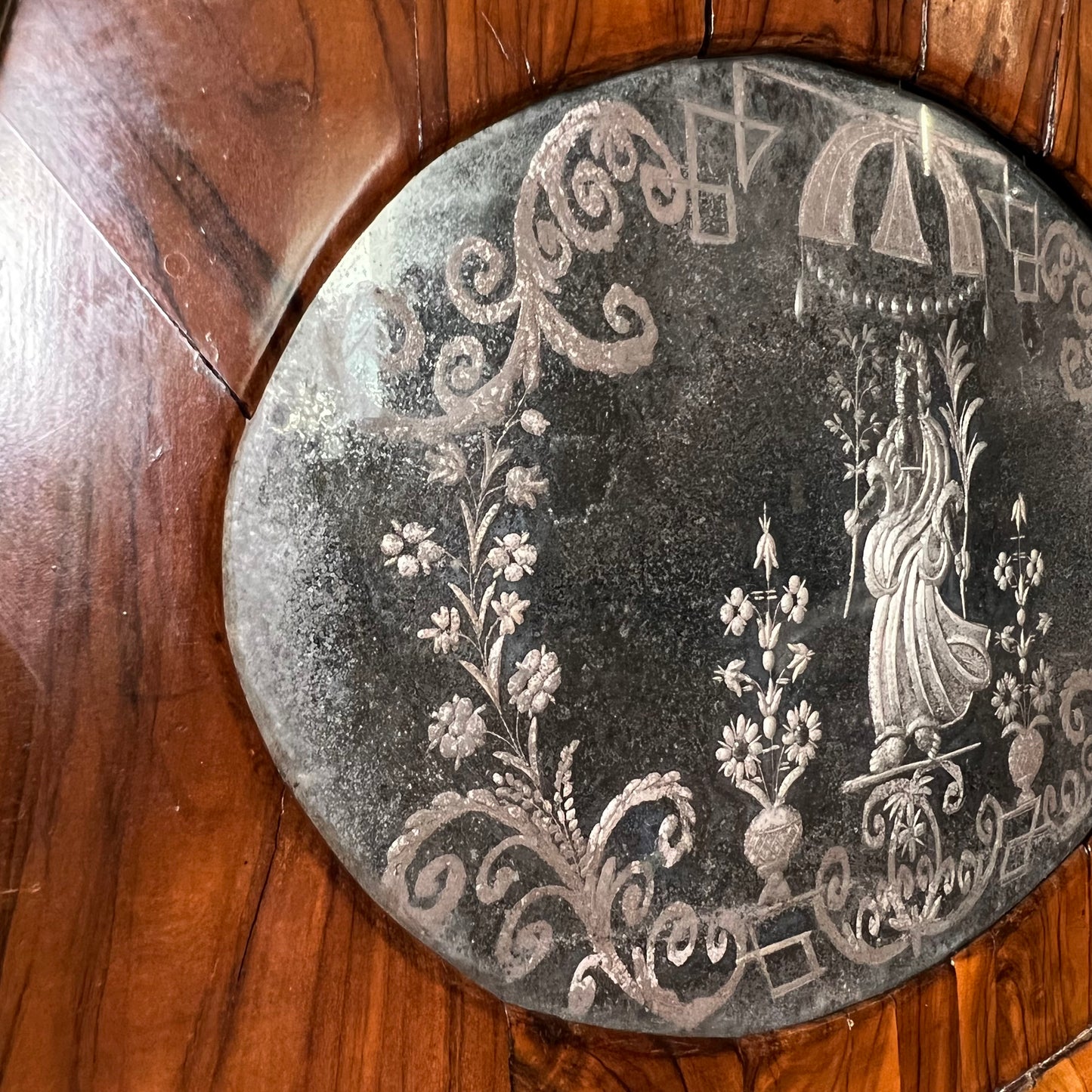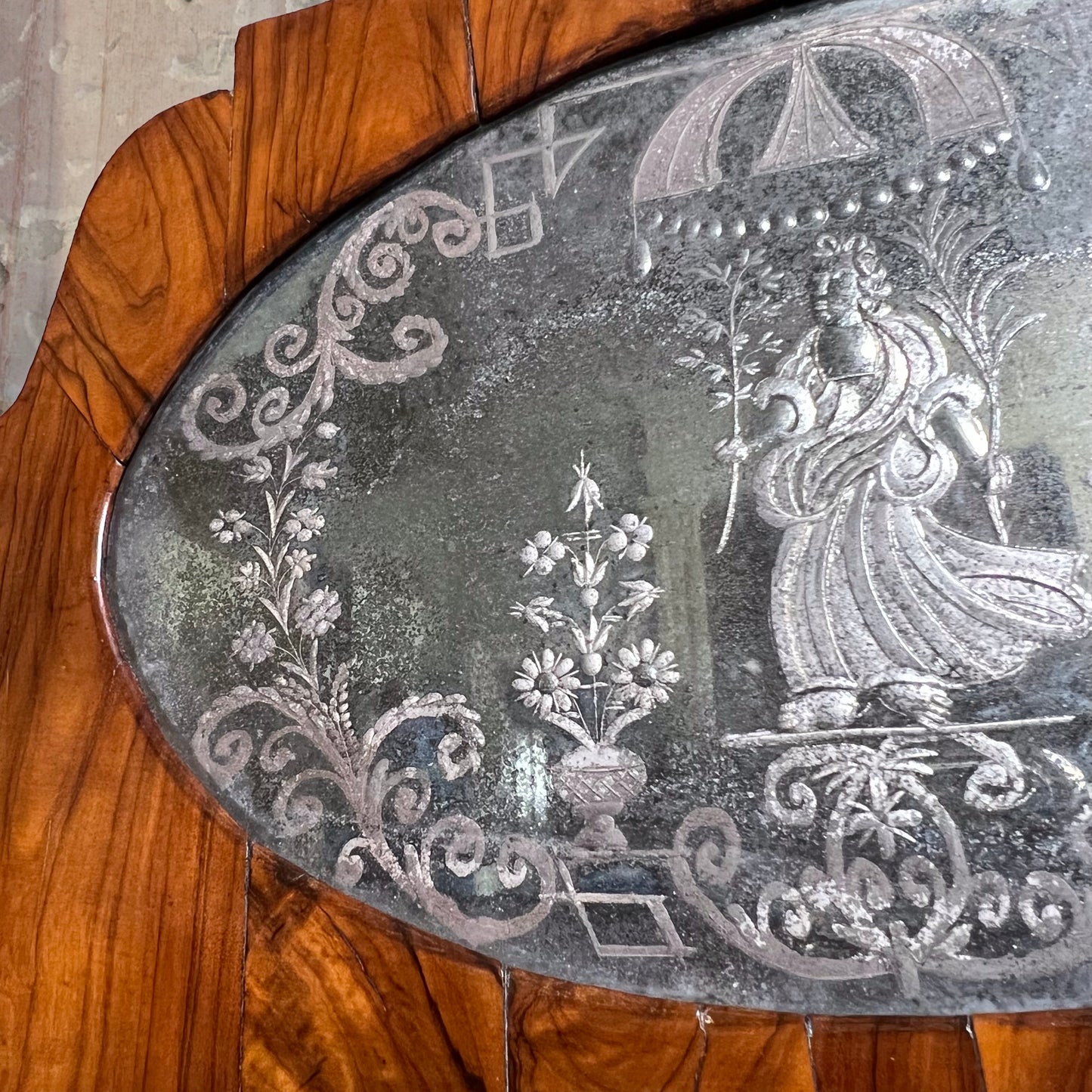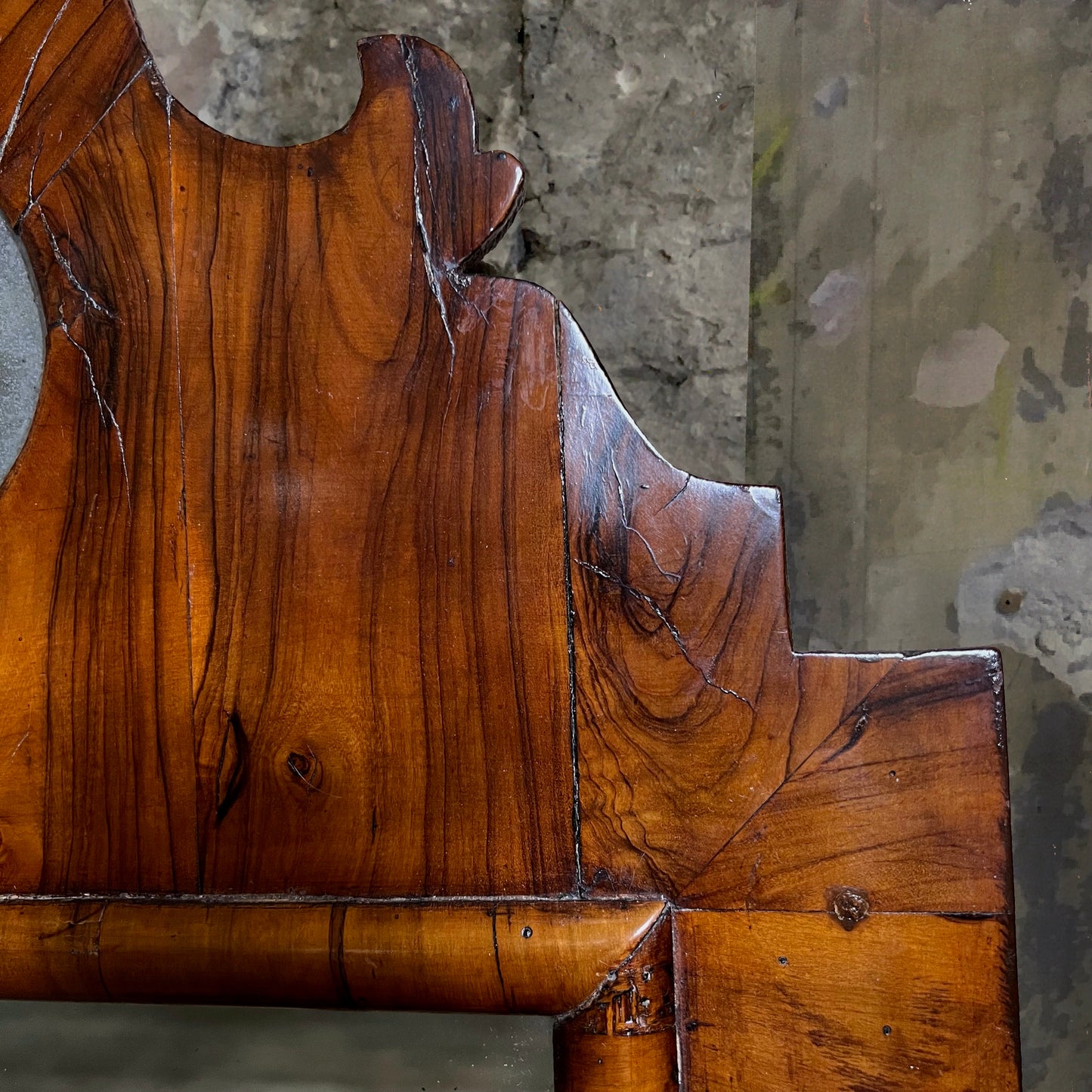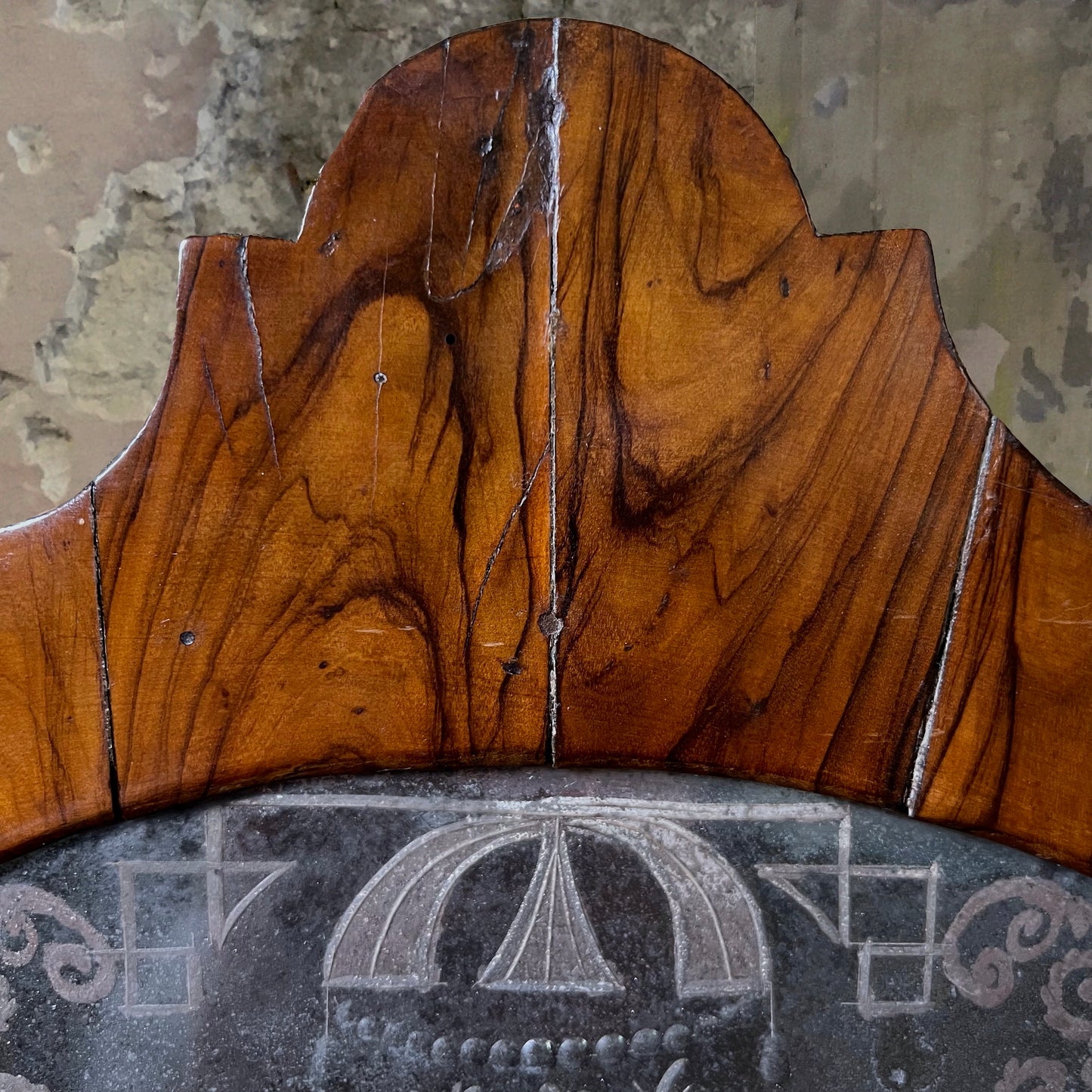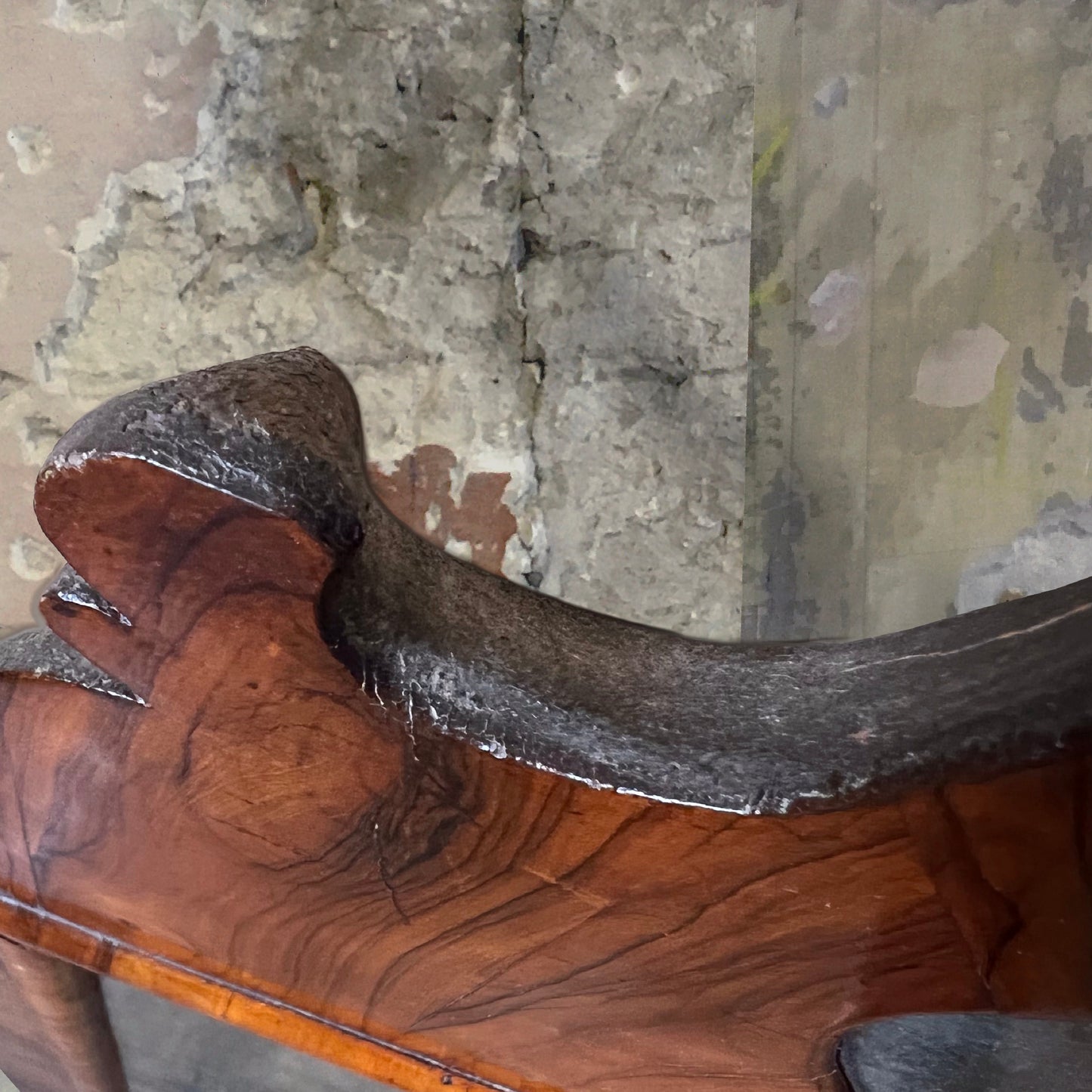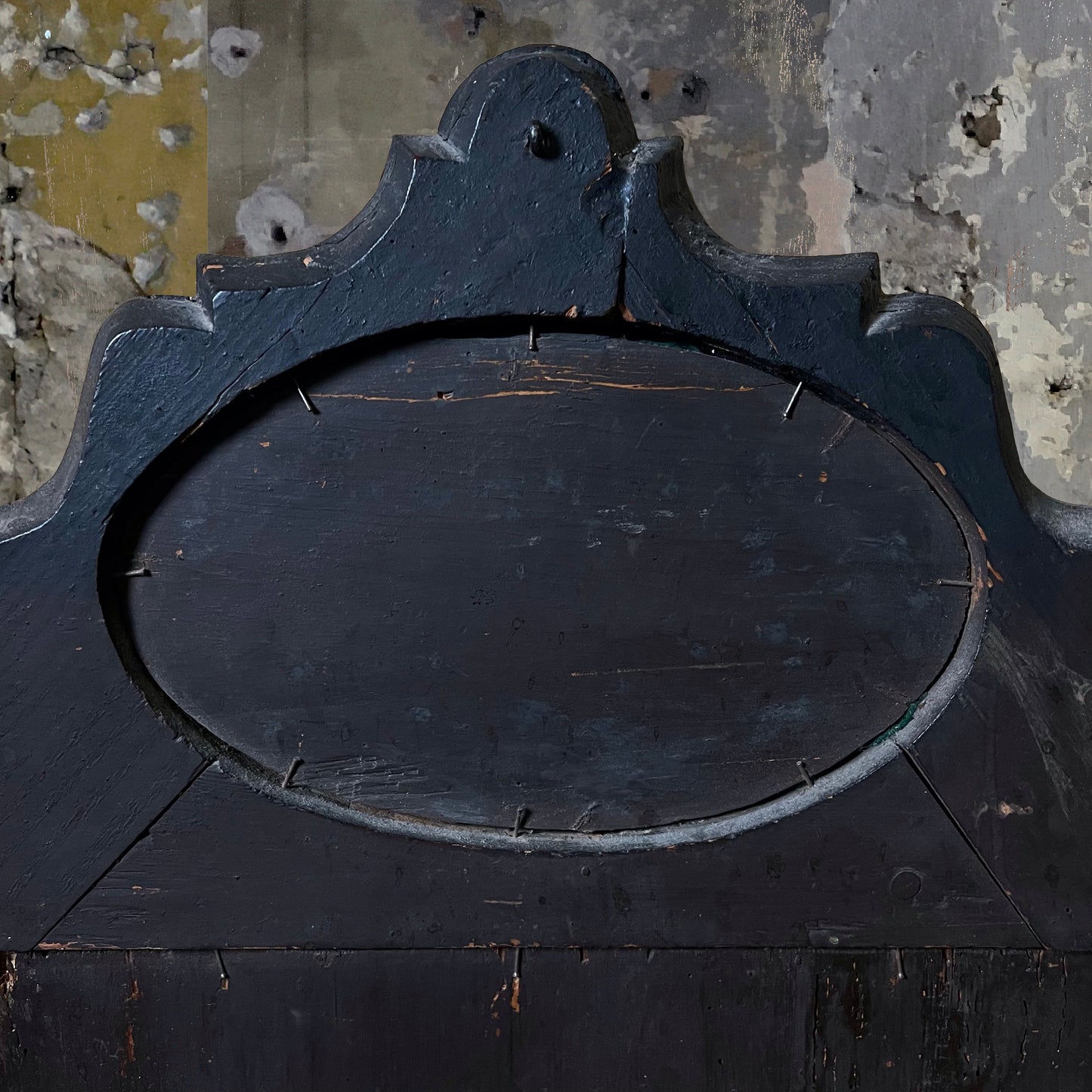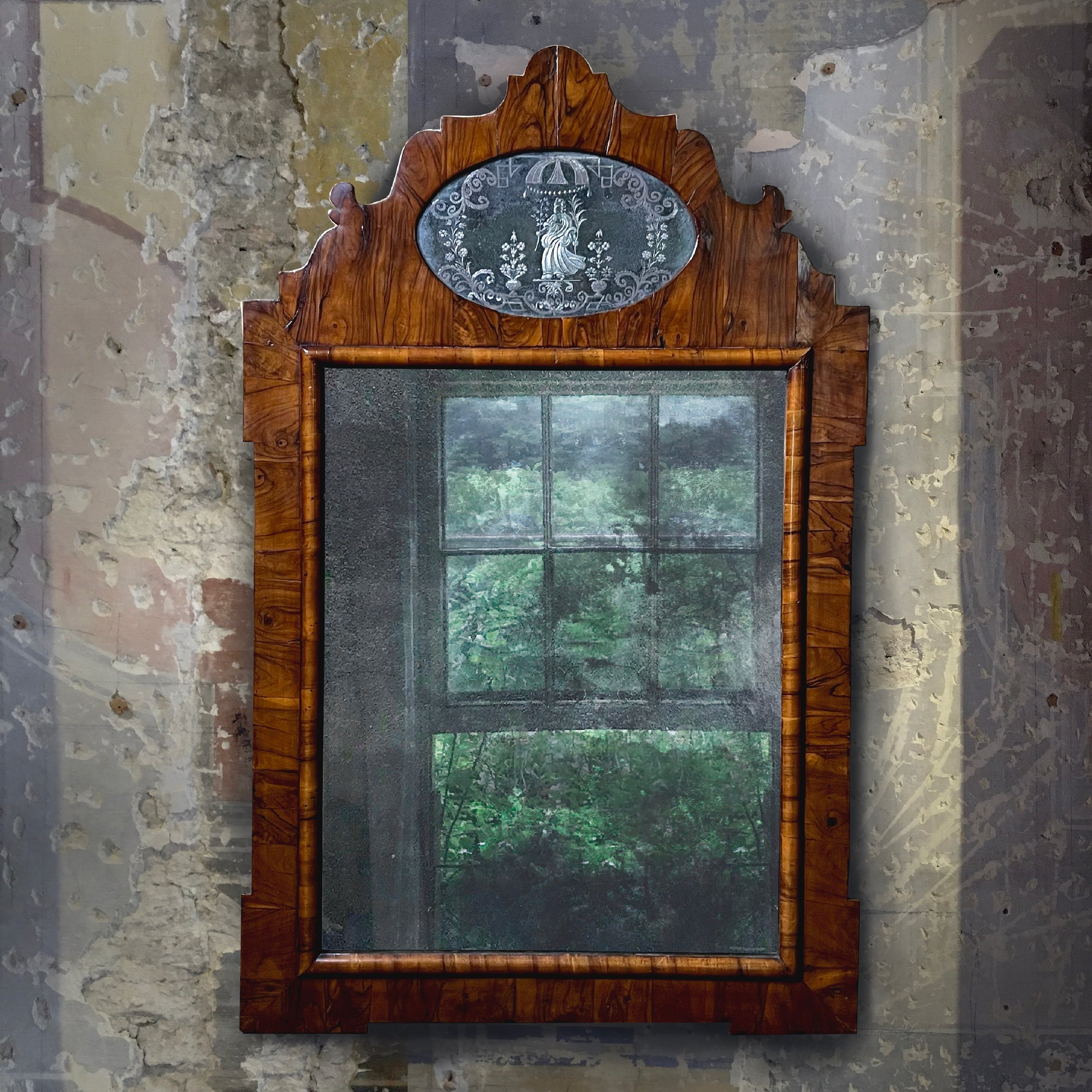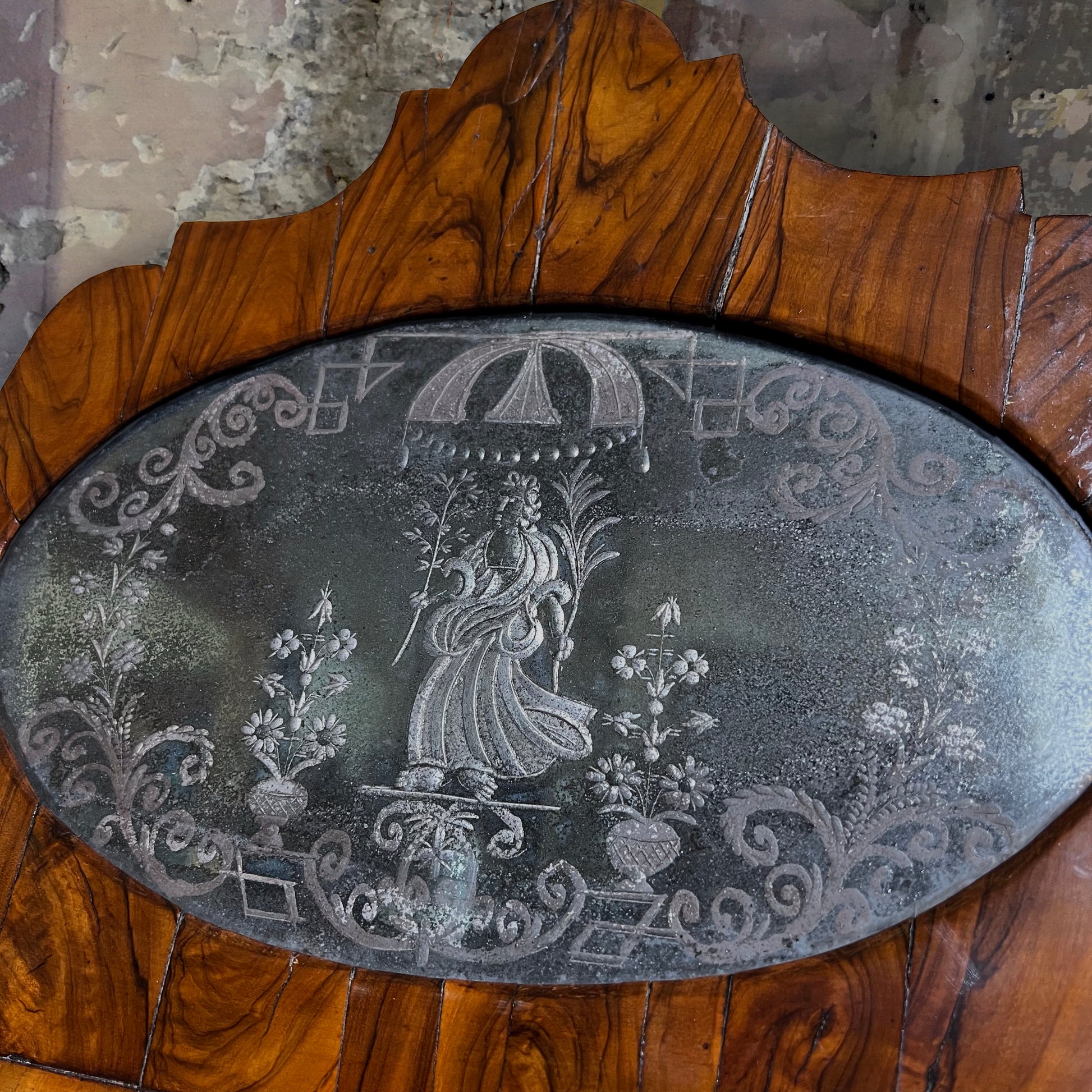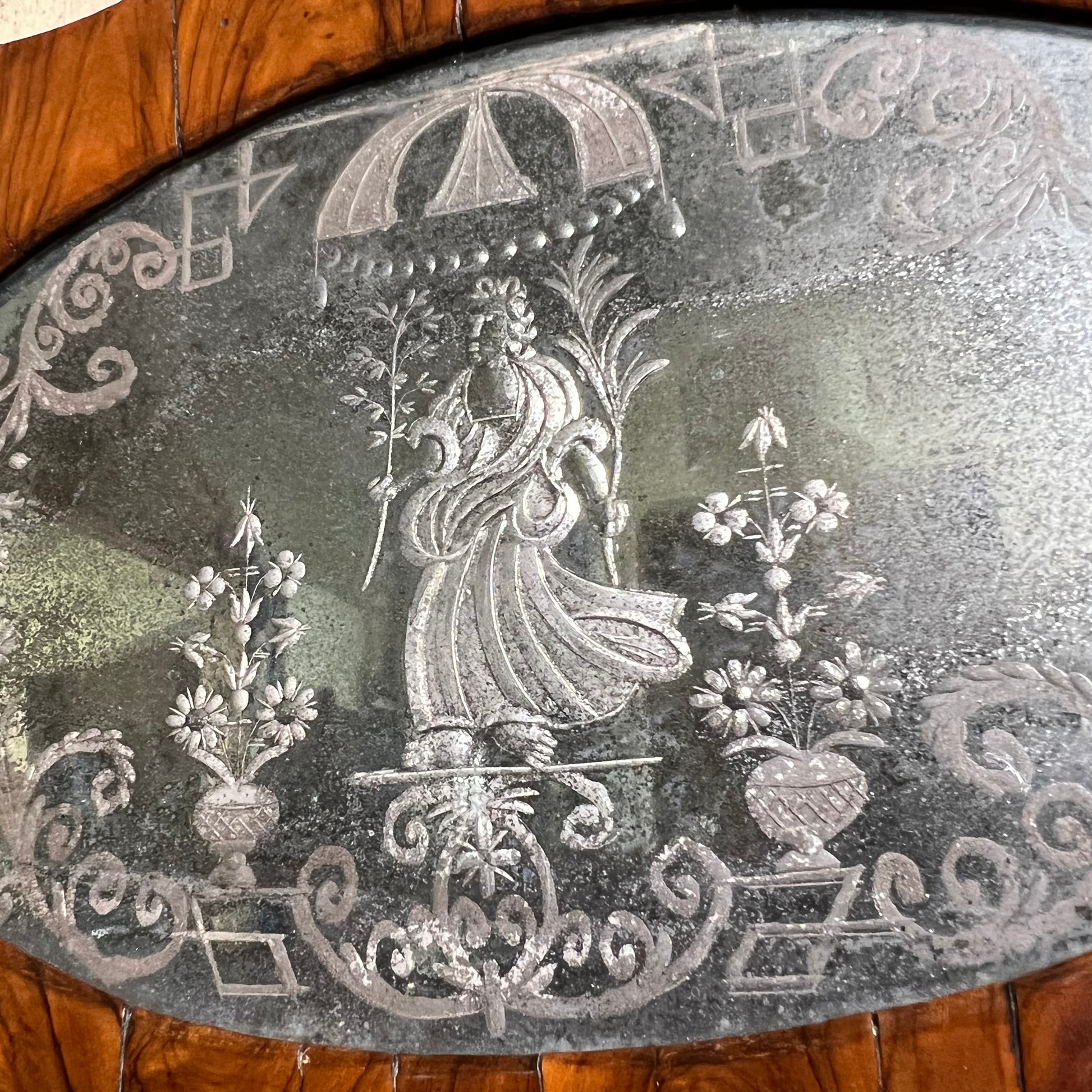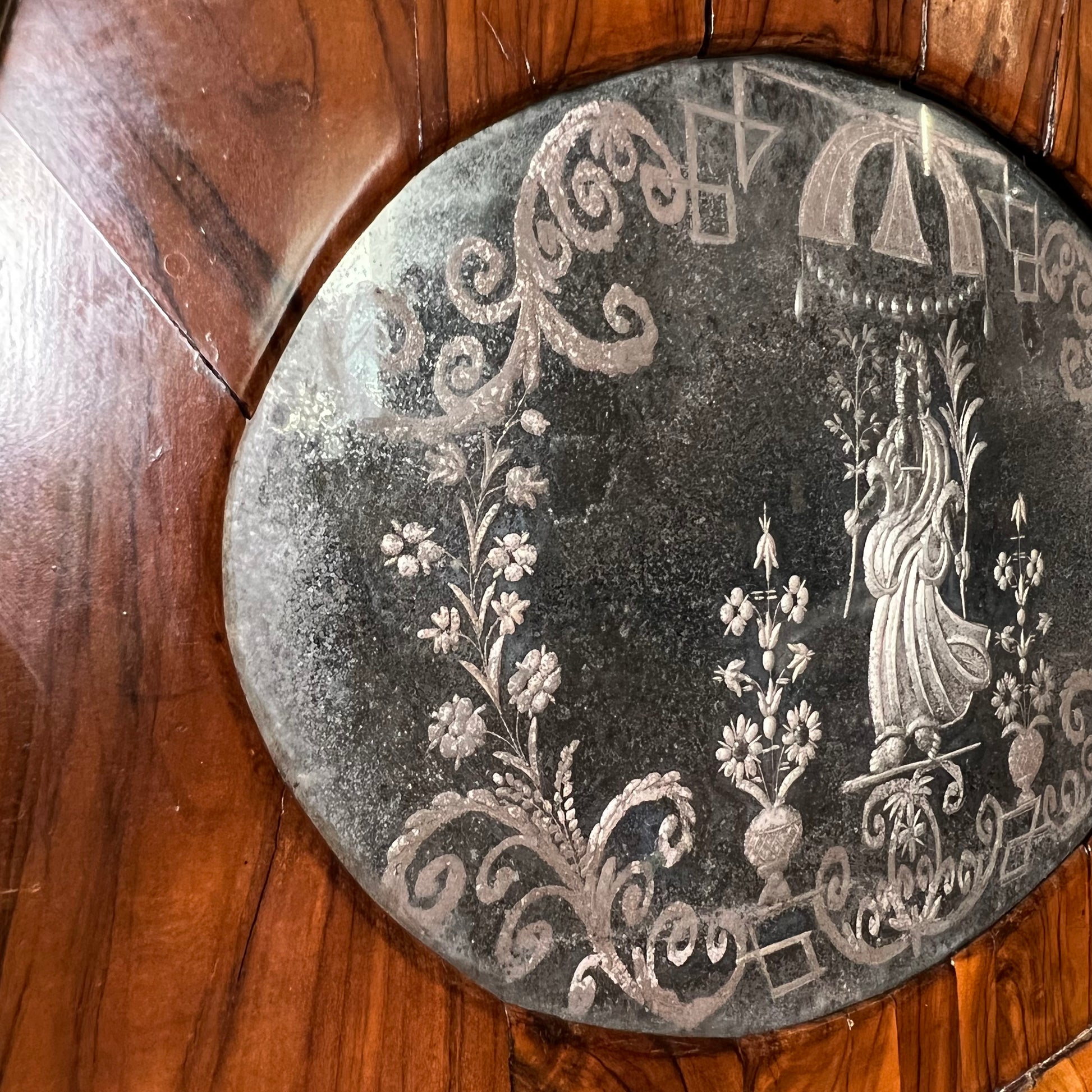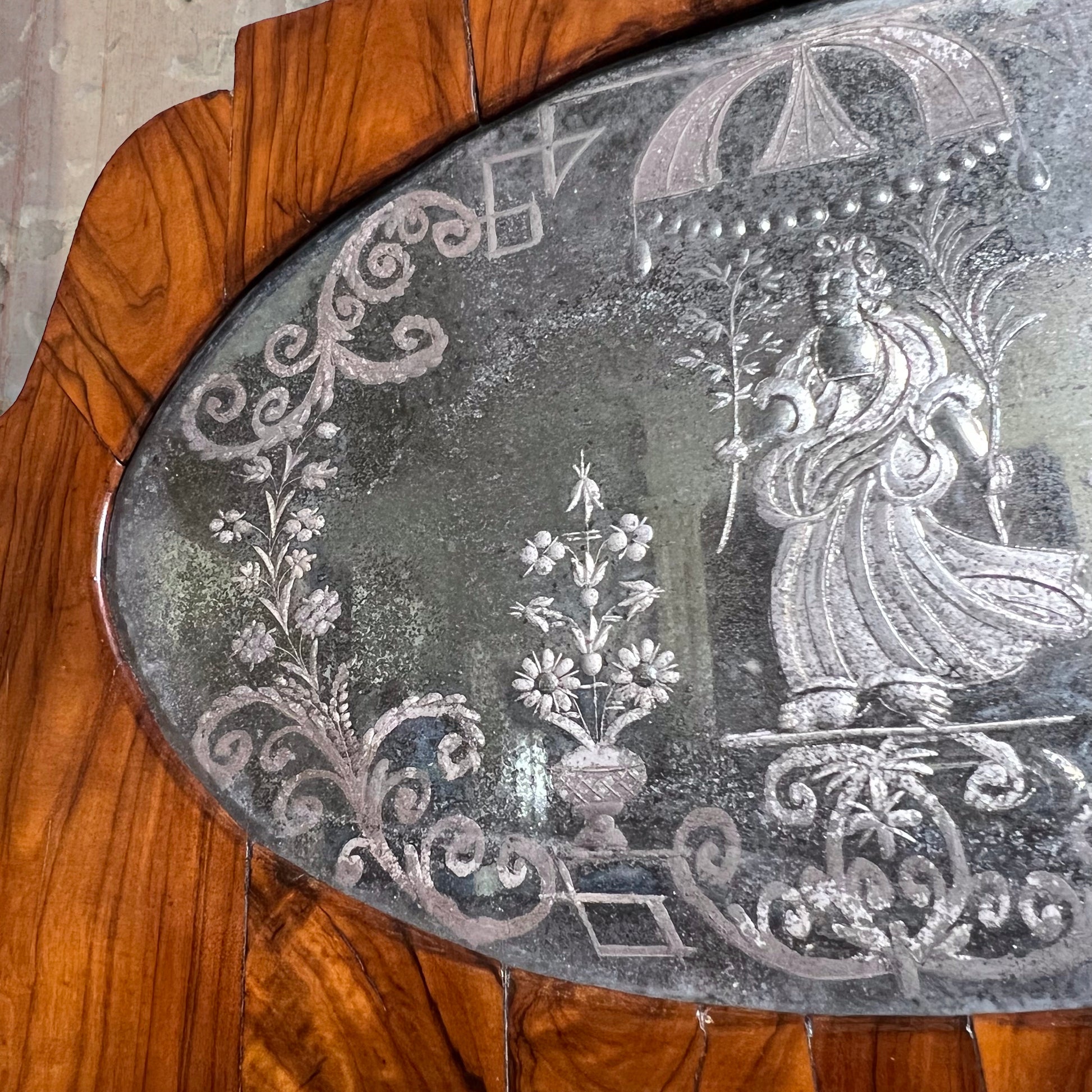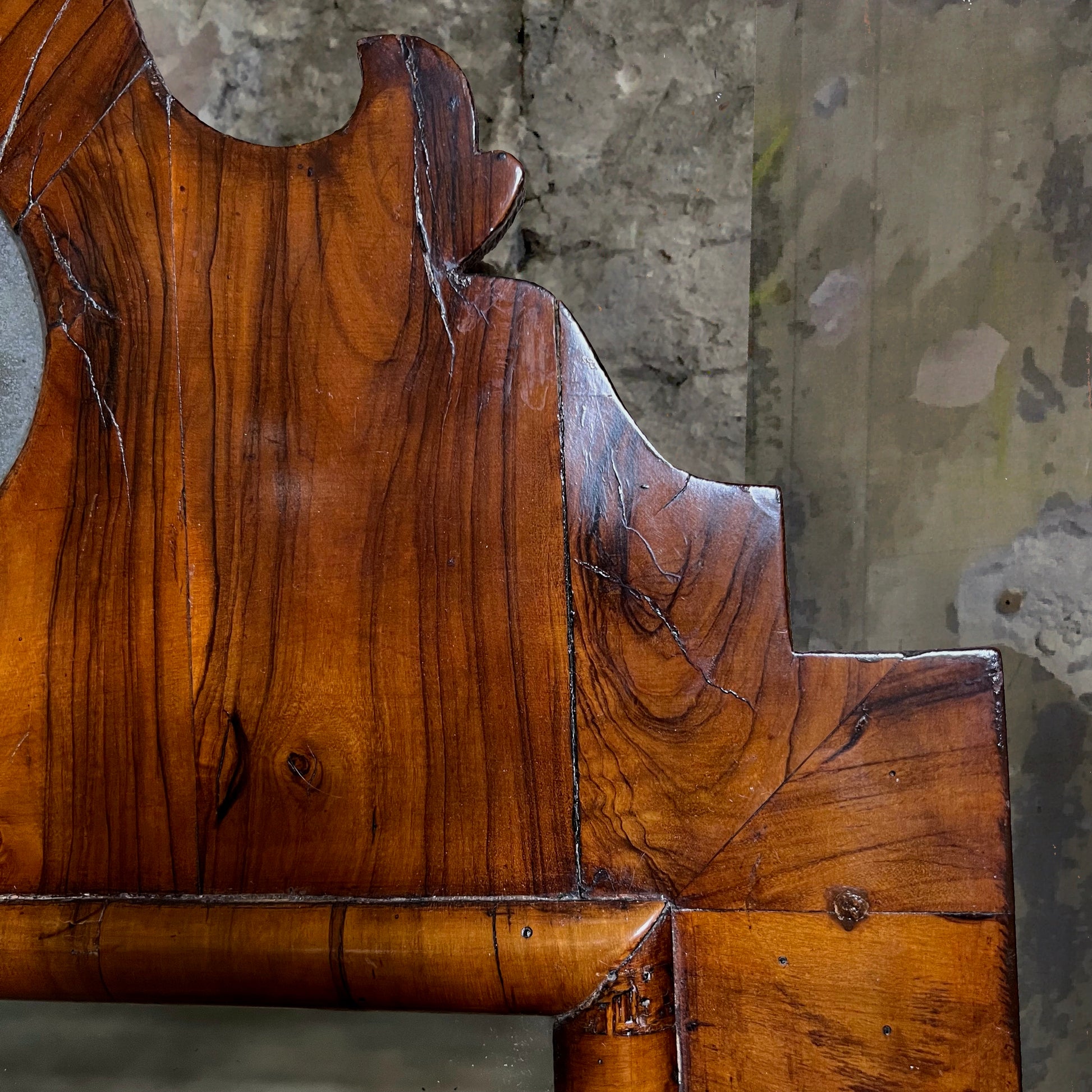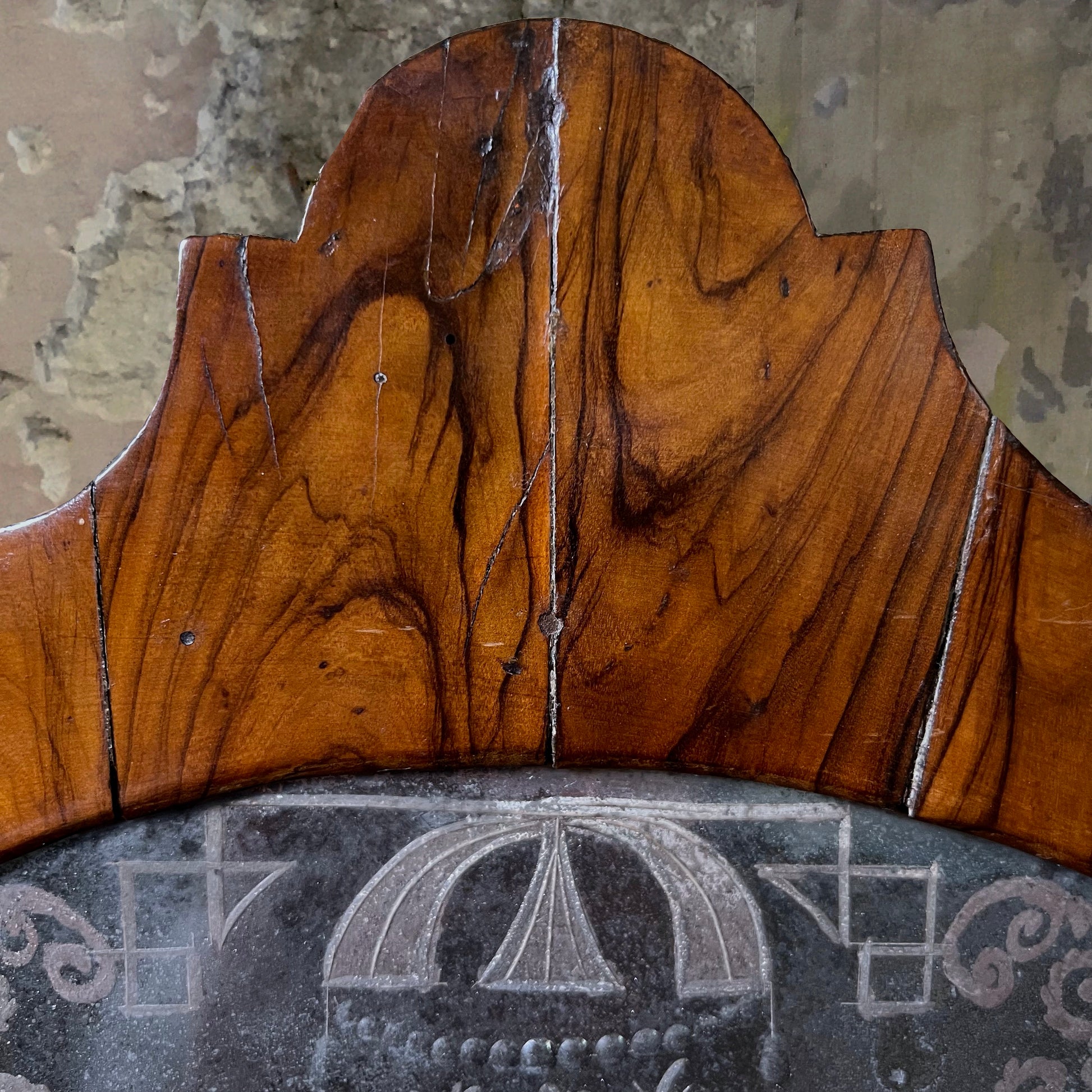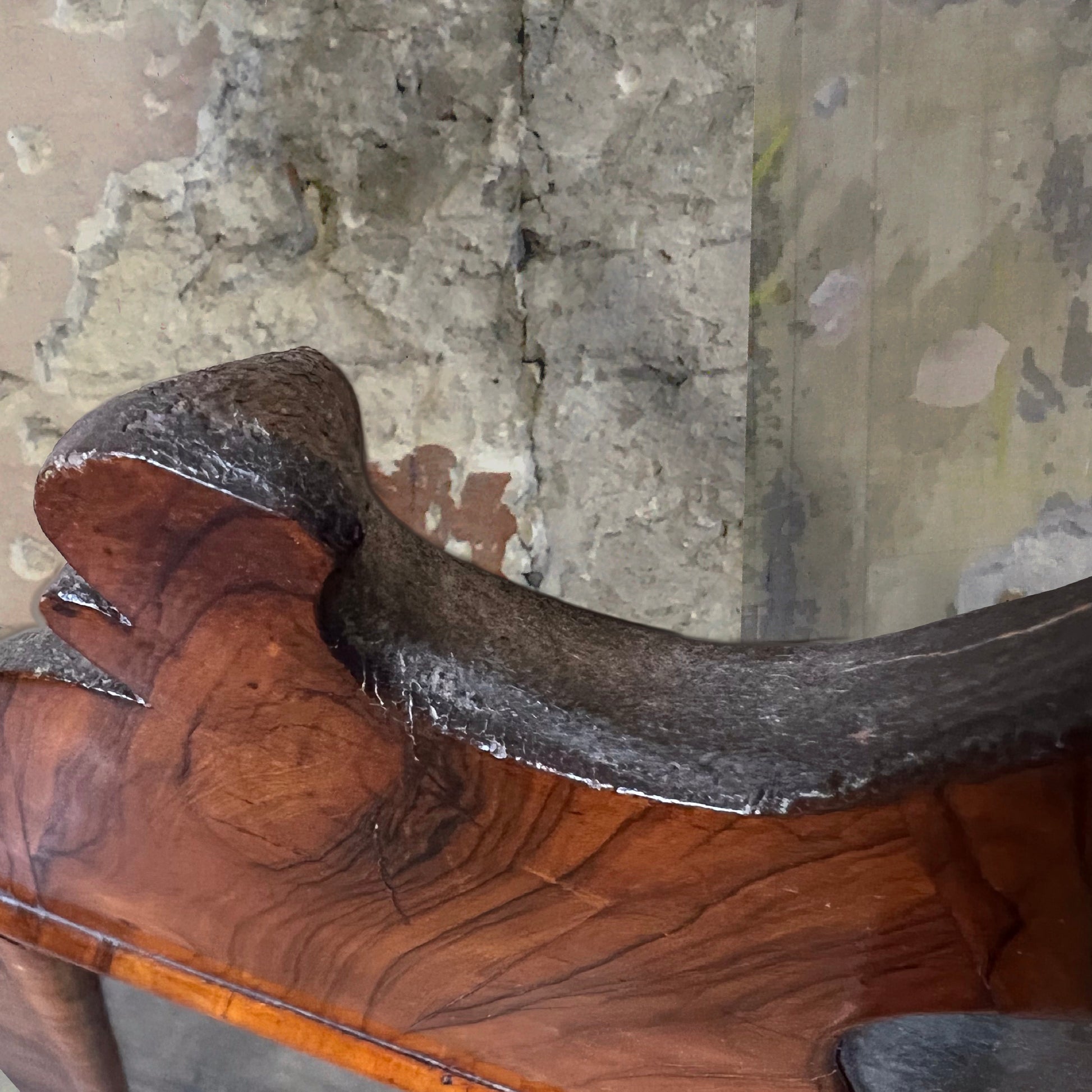English George II Figured Walnut Mirror with Etched Glass Panel Depicting Daphne c.1740
SKU: REGDW
Couldn't load collection availability
UK Mainland Delivery & Non-Mainland
UK Mainland Delivery & Non-Mainland
* Until Christmas we are offering FREE UK MAINLAND doorstep delivery.
For UK Non-Mainland:
At checkout, please select ‘Pick up’ (not ‘Ship’) to complete your purchase.
You can either:
• Proceed with payment and we’ll send a separate link for delivery, or
• Contact us first for a quote, and we’ll send you a custom order link with delivery included.
Placing items in specific locations can be arranged on request — additional costs will apply. Our trusted fine art and antique couriers, ensuring your item arrives safely and with care.
International shipping
International shipping
International delivery, crating, shipping, and insurance can be arranged on request. We’ll provide a quote based on your needs—additional costs will apply and are payable directly to the shipping company.
You’re welcome to use your own shipping agent, or proceed with our recommended agent using the quote we supply. Payment is made directly to the shipping company.
Alternatively, select ‘Pick up’ at checkout to:
• Collect the item yourself
• Use your own shipping agent from our UK showroom
• Or simply complete your purchase
Contact us for a quote
A rare and exceptional English George II figured walnut mirror, circa 1740.
The mirror retains fine plate glass manufactured at the Vauxhall Glassworks (later known as Dawson, Bowles & Co), the foremost centre of English mirror production in the early 18th century. The cresting is formed by a single pane of engraved and etched glass depicting Daphne, surrounded by flower-filled urns. She stands upon a canopied pedestal, holding a palm and olive branch — classical symbols of virtue, triumph, and peace.
The refinement and intricacy of the engraving reflect the highly developed skills of the master glassmakers of Murano. From the late 17th century onwards, Venetian artisans were actively employed in England to advance domestic glass manufacture, bringing with them techniques of engraving and plate production that had long been dominated by Venice.
The central mirror plate is bordered by ovolo-moulded walnut veneer and set within a richly coloured and finely figured walnut surround with characteristic break-arch corners. The composition is completed by an undulating scroll-shaped pediment, lending the mirror a poised architectural presence typical of the mature English Baroque taste of the George II period.
Glass manufacture in the Vauxhall area of South London can be traced back to 1612, when Sir Edward Zouche established a glasshouse later taken over by Sir Robert Mansell, Lord High Admiral. Mansell employed Italian glassmakers and claimed to have founded mirror manufacture in England. In a letter written in 1620 to the Doge and Senate of Venice, the Venetian ambassador to England observed that many natives of Murano were already working in the kingdom, producing looking-glasses and flint glass or teaching others how to make them.
Production expanded significantly after the Restoration of 1660, driven by the wealth generated through overseas trade and the urgent demand for window glass following the Great Fire of London in 1666. The return of the royal court also created a strong market for luxury furnishings. Anticipating this demand, George Villiers sought to establish a monopoly for the manufacture of “Venice Cristall” with the assistance of Venetian glassmakers. Thomas Tilston received a royal patent in 1663, followed by a proclamation in 1664 forbidding the importation of glass plates. By 1671, a new factory had been established at Vauxhall, from which the term “Vauxhall plate” derives.
From around 1700 onwards, England became the world’s largest producer — and exporter — of looking-glasses. This mirror belongs firmly within that period of technical confidence and artistic accomplishment in English glass and furniture making.
- Width: 56.5 cm (22.24″)
- Height: 89 cm (35.04″)
- Depth: 3 cm (1.18″)
